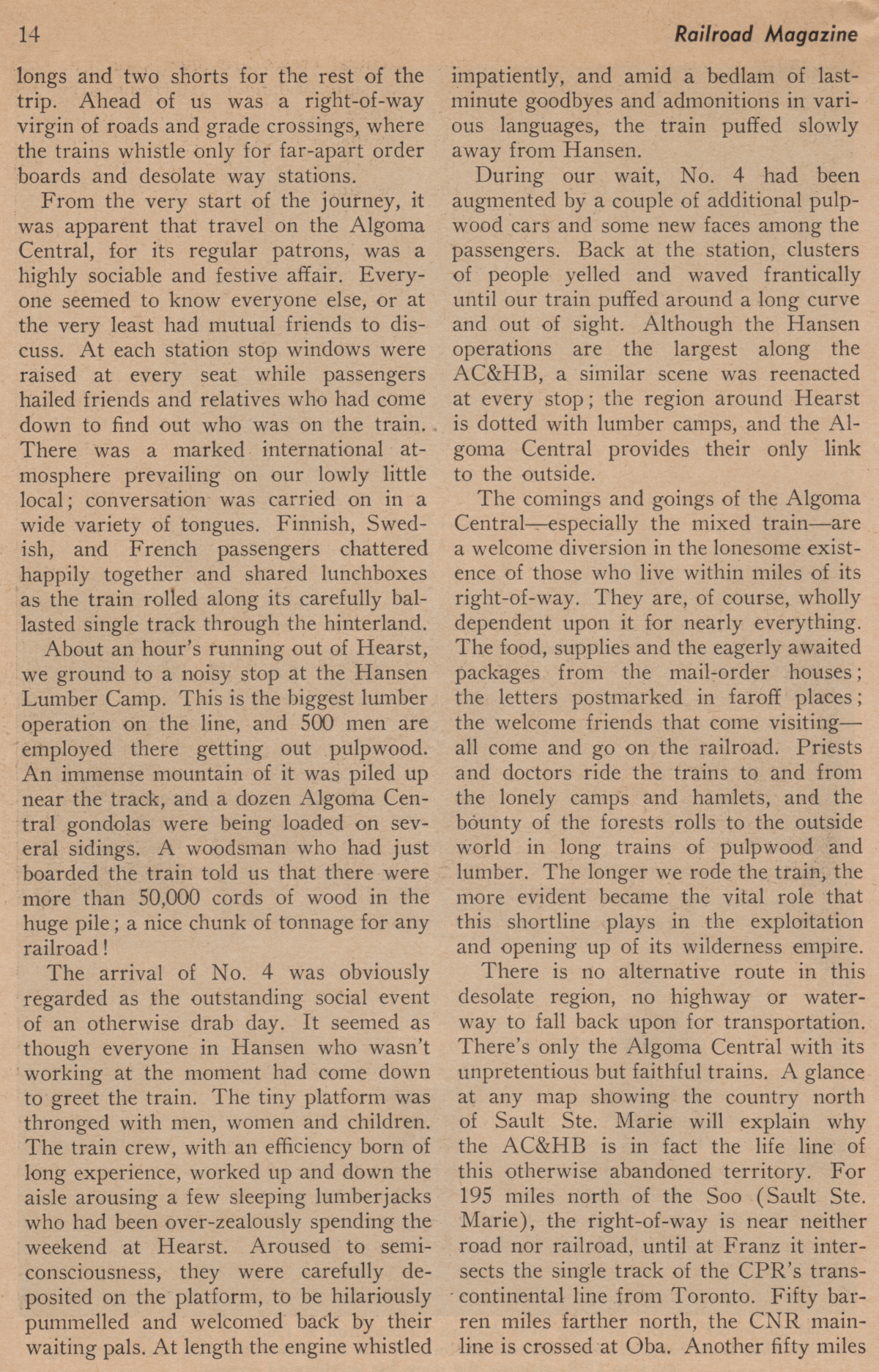LC Gagnon saved this article about a ride on a mixed train on the Algoma Central from Railroad Magazine a little over 70 years ago. Rolly Martin was working as a sectionman on the ACR around Hawk Junction in 1947, so this would have been his work environment.
The train order signal they photographed at Oba is unusual and interesting.
Briefly, they mention the use of the whistle. The importance of whistle signals on wilderness railways is always interesting to think about. The Standard Code of the AAR was a book of 'best practices' for standardized rule language, which was regularly revised as technology changed and/or it was necessary to respond to significant railway disasters. The most recent agreed-upon wording was shown ... along with all the previous versions of a particular rule's language to show how the rule wording had evolved over the years.
I think the pages below (the 1915 version) are the most applicable to this late 1940s article. In particular, Rule 14 (m) is the one I always find to be the most interesting. It announced the approach of a train in perhaps 1 to 4 minutes - when sounded at the mile board for a 'station' etc. If you were an operator with orders, it was time to get out on the platform.
If you were an inferior train, you were hopefully safely in the siding long before you heard the signal. If you weren't clear, you'd better be flagging. If you weren't in the clear or flagging ... it might be time to update your CV. But who knows how many desperate, last minute actions were taken in the Canadian wilderness by 'both trains' to avert disaster and the railways' system of macho Prussian discipline.
I don't know if this was always the case everywhere, but running trades and maintenance of way personnel often 'took care of each other' if one crew or the other was a victim of bad luck. The favour might well be returned at a later date.


















